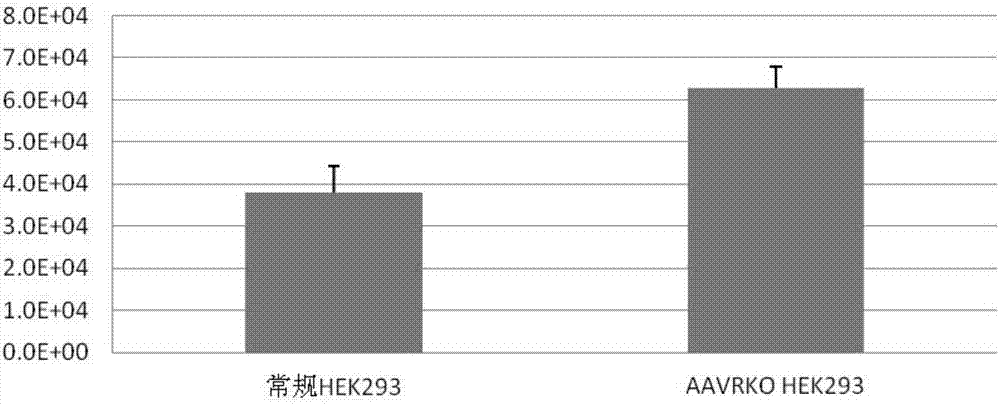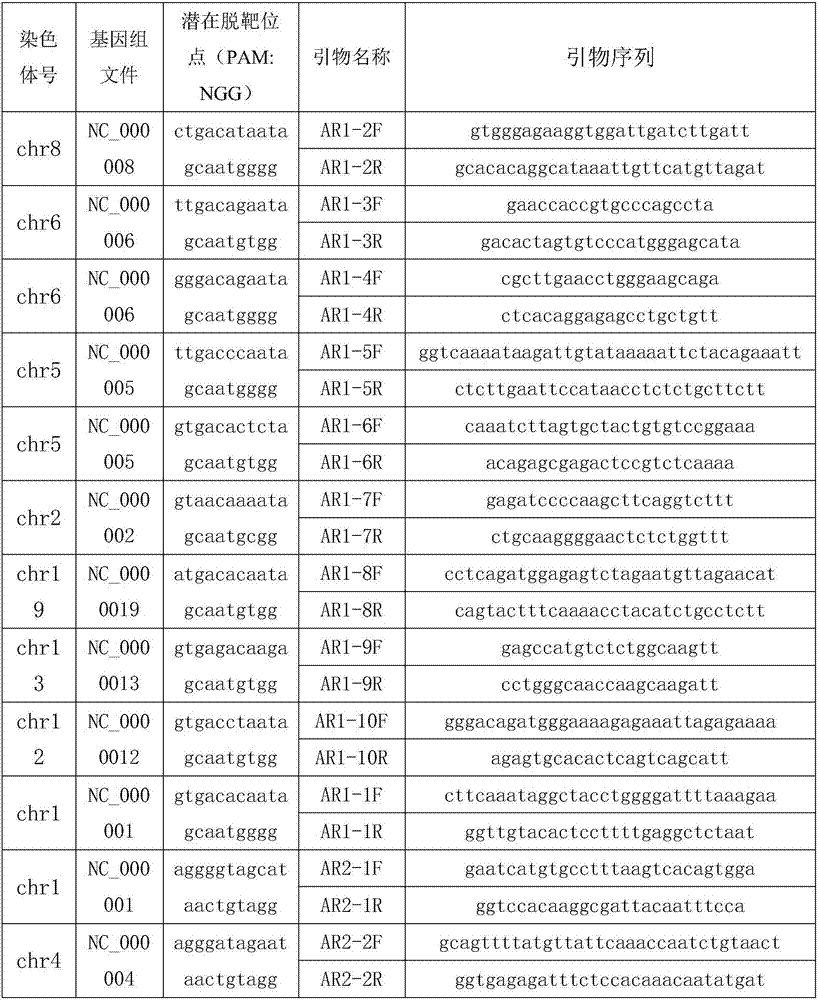Method for knocking out AAV receptor, HEK293 cell strain with AAV receptor knocked out and application
A cell line and cell technology, applied in the fields of genetic engineering and cytology, can solve the problems of low AAV yield, difficulty in scale expansion, and susceptibility to infection.
- Summary
- Abstract
- Description
- Claims
- Application Information
AI Technical Summary
Problems solved by technology
Method used
Image
Examples
Embodiment 1
[0042] Embodiment 1 AAV receptor knockout HEK293 cell line of the present invention and its preparation method
[0043] 1. HEK293 cell line knocked out of AAV receptor of the present invention
[0044] During the production of AAV by conventional HEK293 cells, AAV will be secreted into the supernatant, and the AAV in the supernatant can easily infect HEK293 cells and enter HEK293 cells again. After infection into HEK293 cells, AAV will undergo lysosome inclusion, The steps of digesting the shell and AAV genome escaping from lysosomes will eventually lead to the recycling of AAV that has been produced and secreted, and the total AAV yield will become lower.
[0045] KIAA0319L (hereinafter referred to as AAVR) is an essential receptor for AAV-infected cells. The receptor is located on the surface of the cell membrane, and the gene is located on chromosome 1p34.3. NCBI Reference Sequence: NM_024874.4. Once the receptor KIAA0319L (AAVR) is knocked out, the cell Basically cannot b...
Embodiment 2
[0072] Example 2 Preparation of AAV by AAV receptor knockout HEK293 cell line of the present invention
[0073] The method for preparing AAV by HEK293 cell line with AAV receptor knockout, the specific operation steps include:
[0074] Utilize the cell line ARKO-X88 of the present invention, adopt conventional AAV production method, namely as follows:
[0075] 1. Spread ARKO-X88 cells about 3x105 into a 24-well plate, and the cell density is about 60-70% when transfected the next day;
[0076] 2. Use the AAV helper vector pRC-DJ (vector source: on the basis of pAAV2 / 2 derived from the UPENNvector core of the University of Pennsylvania, U.S., and replace the AAV2 Cap2 sequence with the published AAV-DJ sequence) and the Ad helper vector pAd -deltaF6 (source of vector: PL-F-PVADF6 from UPENN vector core, University of Pennsylvania) and recombinant AAV vector pITR-CAG.EGFP (source of vector: PL-C-PV1045 pENN from UPENN vector core, University of Pennsylvania) AAV CB6 PI MASTER,...
PUM
 Login to View More
Login to View More Abstract
Description
Claims
Application Information
 Login to View More
Login to View More - R&D
- Intellectual Property
- Life Sciences
- Materials
- Tech Scout
- Unparalleled Data Quality
- Higher Quality Content
- 60% Fewer Hallucinations
Browse by: Latest US Patents, China's latest patents, Technical Efficacy Thesaurus, Application Domain, Technology Topic, Popular Technical Reports.
© 2025 PatSnap. All rights reserved.Legal|Privacy policy|Modern Slavery Act Transparency Statement|Sitemap|About US| Contact US: help@patsnap.com


